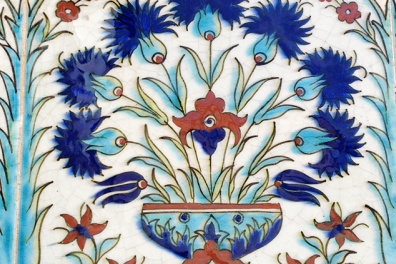International symposium "Landscape representations in the literature of the Arab world and the Near East", October 15 and 16

International symposium jointly organized by the Centre d'Etudes et de Recherche Moyen-Orient, Méditerranée-CERMOM (Inalco) and the Centre des Études arabes et orientales-CEAO (Université Sorbonne Nouvelle-Paris 3).
Scientific event funded by the Inalco Scientific Council
Friday, October 15, 2021 - 09:00 and Saturday, October 16, 2021 - 17:00 - PLC Auditorium
Inalco - Pôle des Langues et Civilisations - 65 rue des Grands Moulins - 75013 Paris
Please note: registration to attend this scientific event is closed.
Organizers:
Gianluca Saitta (CERMOM, Inalco)
Brigitte Foulon (CEAO, Sorbonne Nouvelle - Paris 3)
Luc Deheuvels (CERMOM, Inalco)
Contact: View e-mail
Landscape representations in the literatures of the Arab world and the Near East
We are today witnessing a strong evolution in research on landscape representations in the literatures of the Near East and the Mediterranean. In the mid-1990s, Augustin Berque stated that for a civilization to be said to be landscape-oriented, it had to meet four criteria: linguistic representations, i.e. one or more words for "landscape"; literary representations, oral or written, singing or describing the beauties of the landscape; pictorial representations, having landscape as their theme; garden representations, expressing a properly aesthetic appreciation of nature1. Based on this definition, the philosopher Alain Roger classed Arab-Muslim civilization as "proto-landscape "2, i.e., as meeting only some of these criteria, as opposed to fully-fledged "landscape" civilizations (the only ones to meet all four criteria, such as China or post-Renaissance Europe) or "non-landscape" civilizations. This definition is currently being re-evaluated for the Arab-Muslim domain, where the study of landscape representations, especially in literature, has remained far too neglected until now. Recent studies have been largely devoted to the analysis of complex and developed landscape descriptions, especially in classical literature, presenting a multi-sensorial nature where several descriptive axes are brought together. In this literature, the constituent elements of the landscape are ordered in a coherent organization that takes into account the vertical axis (shrubby vegetation, branches, water from the sky, etc.) and the horizontal axis (flowering, adornment of the earth's surface, water sources, etc.), but also the different senses solicited: sight, smell and hearing.
These representations are the result of a profound relationship between two strata, that of pre-Islamic poetry (atmospheric phenomena, observation of the stars and, more generally, the sky) and that of the religious imagination of the Koran, through a constant reference to the features of the idealized landscape of the Muslim Paradise. But very often, a third stratum, real and rooted in local geography (Andalusian, Yemeni, etc.) combines and intertwines with the others. This research also shows that certain images and descriptive themes have become fixed over the centuries, which explains the durability of certain landscape representations in remote geographical areas of the Arab-Muslim world and the Near East.
Today, landscape literature researchers are faced with many questions, such as the interaction between real and/or idealized landscape, the place given to subjectivity and feelings in the man-landscape relationship, or the symbolic significance given to nature in these landscape representations. Moreover, while a few studies have been carried out in classical or post-classical literature, it would be interesting to see how these themes have evolved and been exploited in modern and contemporary Arabic literature.
The aim of this symposium is to bring together researchers in Arabic literature, but also in Berber, Hebrew, Persian and Turkish literature from the medieval and modern periods, around questions relating to representations of landscape and nature in literature.
Three main themes will be addressed:
- the interaction between real and/or idealized landscape,
- the place accorded to subjectivity and feelings in the man-landscape relationship,
- the symbolic significance accorded to nature in landscape representations.
Affiche_Colloque international : "Les représentations paysagères dans les littératures du monde arabe et du Proche-Orient"_15 et 16-10-2021 (539.43 KB, .pdf)
Programme_Colloque international : "Les représentations paysagères dans les littératures du monde arabe et du Proche-Orient"_15 et 16-10-2021 (466.93 KB, .pdf)